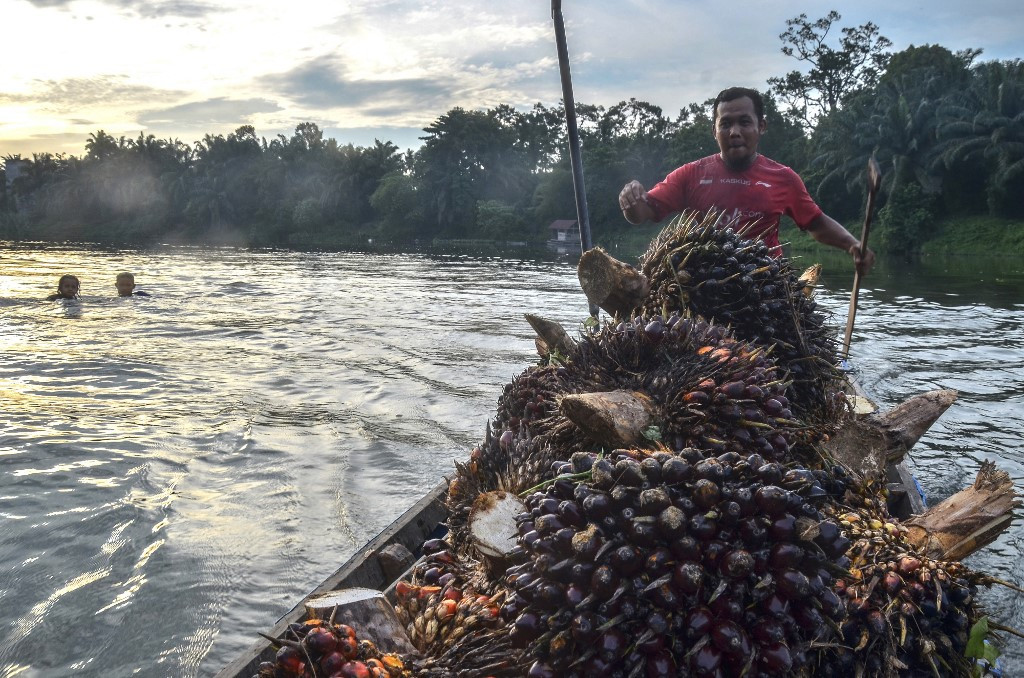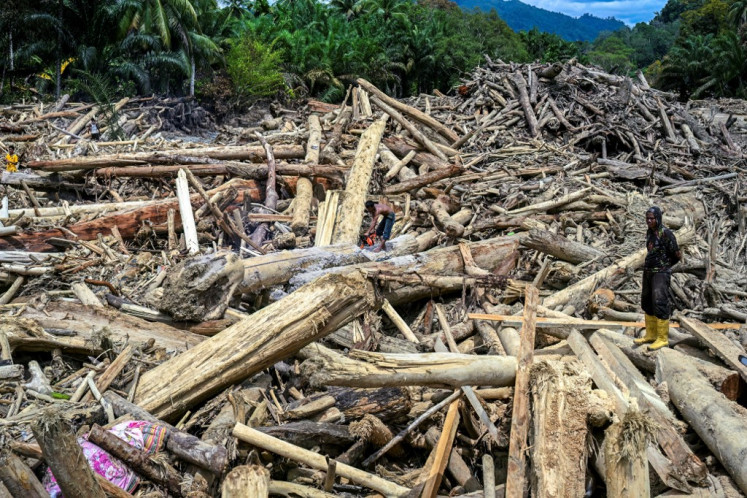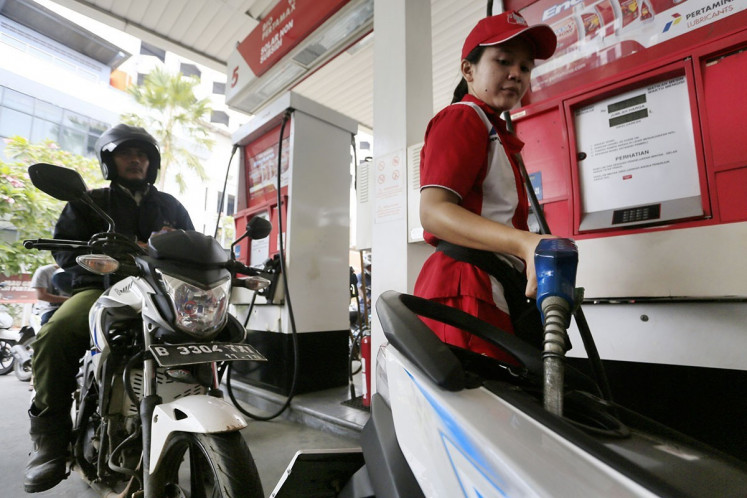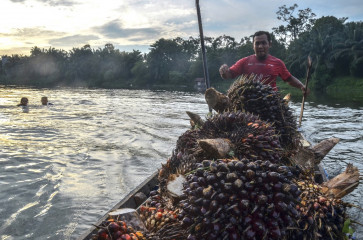Popular Reads
Top Results
Can't find what you're looking for?
View all search resultsPopular Reads
Top Results
Can't find what you're looking for?
View all search resultsHow palm oil can help realize the vision of high-income country
The plan to double palm oil production is still environmentally, technically and commercially feasible because there are still large areas outside the natural forests that are fit for oil palm estate expansion.
Change text size
Gift Premium Articles
to Anyone
Among all the perennial crops grown in Indonesia, oil palm plays the most vital role in the country’s economy in terms of income generation, foreign exchange earnings, regional development, poverty alleviation in rural areas, employment and the sustainable source of numerous kinds of consumer goods in the long term.
Yet more promising is that palm oil will play an increasingly important role as a sustainable source of biofuel as well. President-elect Prabowo Subianto’s campaign promise to accelerate Indonesia’s transition to renewable energy includes a plan to expand biofuel production by upgrading biodiesel 35 or B35 from palm oil to B50.
Even now palm oil has become the second-largest non-oil export after coal, which earned US$30.3 billion last year, or 12 percent of total exports. As the world’s largest producer of palm oil with a total output of 55 million tonnes in 2023, Indonesia supplied 54 percent of the global palm oil market and one-third of the total global vegetable oil supply. Palm oil also now supplies for more than 45 percent of the global vegetable oil consumption.
Still more encouraging amid climate change, is that palm oil is the most productive among all vegetable oils. In addition to their exceptional productivity, oil palm trees also demand much less work and production inputs per unit than other oil crops. Therefore, palm oil is by far the cheapest oil to produce.
This commodity contributes significantly to poverty alleviation in rural areas because 40 percent of the estimated 16.5 million hectares of oil palm estates across the country are owned by 6.7 million smallholder farmers and the palm oil industry directly and indirectly employs 16 million people.
But the biggest concern over Prabowo’s ambitious biodiesel production program is its impact on the environment because even now, many green NGOs have been blaming the commodity as one of the main causes of deforestation. Another concern is the likely fiercer competition between the demand for food and fuel which could cause inflation pressures. Consumption of palm oil for biodiesel in Indonesia last year amounted to 23.2 million tonnes, 46 percent of total national consumption, with food making up 44 percent and oleochemicals 10 percent.
However, we still think the plan to double palm oil production is still environmentally, technically and commercially feasible because there are still large areas outside the natural forests that are fit for oil palm estate expansion. This crop also is most suitable and at best to be cultivated in the regions around the equator such as Indonesia.



















